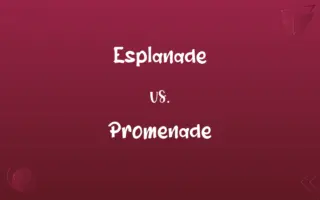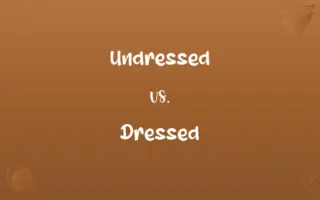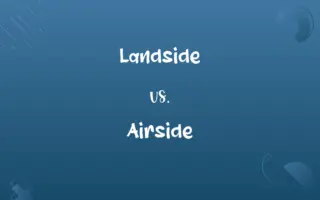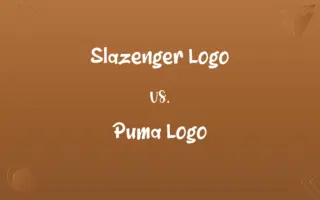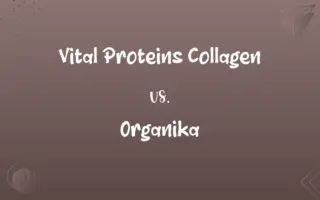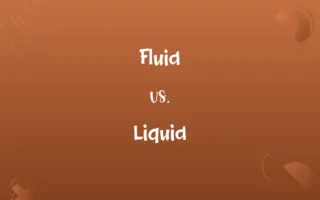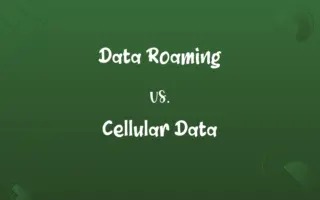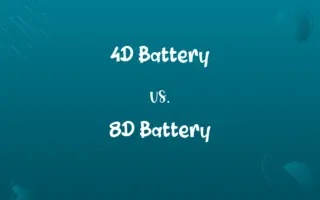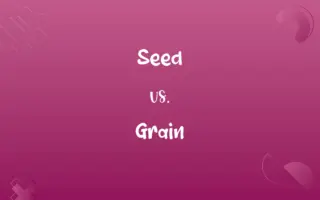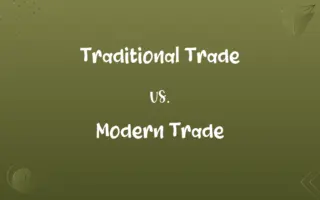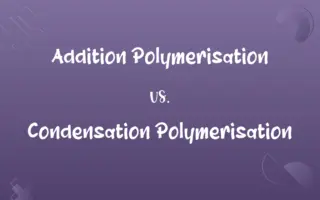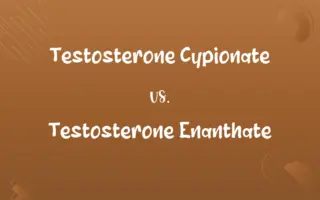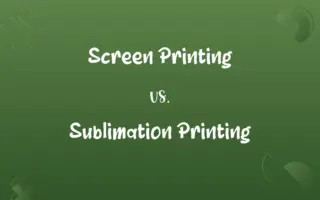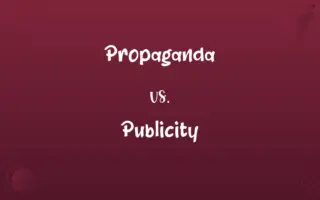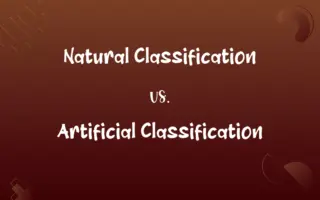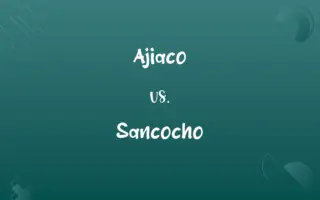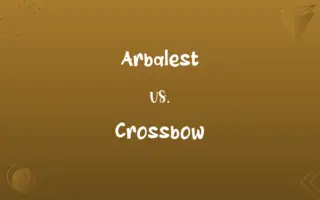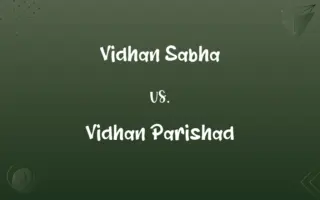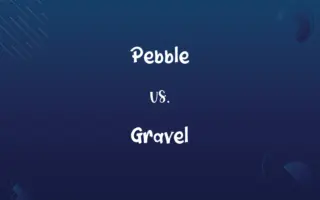Silage vs. Soilage: Know the Difference

By Shumaila Saeed & Dua Fatima || Updated on March 5, 2024
Silage is fermented fodder stored for livestock feed, while soilage refers to fresh, green fodder fed directly to animals.

Key Differences
Silage involves the process of fermentation under anaerobic conditions to preserve green fodder, making it available for livestock throughout the year. This method allows the storage of high-moisture fodder, such as grasses and legumes, by creating an acidic environment that inhibits spoilage. On the other hand, soilage, also known as green chop, involves cutting fresh fodder and feeding it to livestock immediately. This practice ensures animals receive the freshest and most nutritious form of feed but requires consistent harvesting and immediate consumption.
Shumaila Saeed
Mar 05, 2024
While silage is recognized for its convenience and the ability to maintain a stable feed supply, especially in regions with seasonal growing limitations, soilage demands daily labor and is dependent on suitable growing conditions. Silage, therefore, offers a solution to feed scarcity during adverse weather or off-seasons, whereas soilage maximizes nutritional content when fresh feed is readily available.
Dua Fatima
Mar 05, 2024
The preparation of silage typically occurs in silos, pits, or wrapped bales, where the fodder undergoes fermentation for weeks before it's ready for consumption. This contrasts with soilage, which bypasses the storage and preservation process, demanding no waiting period before feeding. The fermentation process in silage also alters the nutritional profile of the fodder, sometimes enhancing digestibility, while soilage retains its original nutritional state but with a limited shelf life.
Shumaila Saeed
Mar 05, 2024
Nutritionally, silage can vary in quality based on the fermentation process, with poorly managed silage potentially leading to waste or reduced nutritional value. Soilage, provided it is fresh and consumed promptly, offers peak nutritional benefits but can be challenging to maintain throughout the year, especially in colder climates.
Dua Fatima
Mar 05, 2024
Comparison Chart
Definition
Fermented, stored fodder for livestock
Fresh, green fodder fed directly to livestock
Dua Fatima
Mar 05, 2024
ADVERTISEMENT
Preservation
Fermentation under anaerobic conditions
No preservation, served fresh
Shumaila Saeed
Mar 05, 2024
Feeding Time
Can be stored and used throughout the year
Must be harvested and fed daily
Shumaila Saeed
Mar 05, 2024
Preparation
Requires silos, pits, or wraps for storage
Requires daily cutting and immediate feeding
Shumaila Saeed
Mar 05, 2024
Nutritional Change
Fermentation can alter nutritional content
Retains original nutritional value
Hifza Nasir
Mar 05, 2024
Shelf Life
Long, due to acidic environment preventing spoilage
Short, must be consumed immediately
Shumaila Saeed
Mar 05, 2024
ADVERTISEMENT
Labor Intensity
High initially, lower afterwards due to storage
Consistently high due to daily harvest and feeding
Hifza Nasir
Mar 05, 2024
Suitability
Beneficial in regions with seasonal feed scarcity
Best where fresh feed is readily available year-round
Shumaila Saeed
Mar 05, 2024
Silage and Soilage Definitions
Silage
Preserved fodder for livestock.
Farmers store corn silage to feed cattle during winter.
Shumaila Saeed
Mar 05, 2024
Soilage
Fresh livestock feed.
Soilage, or green chop, is cut daily and fed immediately to livestock.
Shumaila Saeed
Mar 05, 2024
Silage
Anaerobic fermentation process.
The anaerobic conditions in silos help preserve silage.
Shumaila Saeed
Mar 05, 2024
ADVERTISEMENT
Soilage
No preservation required.
Since soilage is served fresh, it doesn’t need to be stored.
Shumaila Saeed
Mar 05, 2024
Silage
Acidic environment prevents spoilage.
The acidic environment in silage inhibits the growth of spoilage organisms.
Dua Fatima
Mar 05, 2024
Soilage
Peak nutritional content.
Feeding soilage ensures livestock receive the most nutrients.
Dua Fatima
Mar 05, 2024
Silage
Fermented feed.
Silage is made by fermenting high-moisture fodder in a silo.
Dua Fatima
Mar 05, 2024
Soilage
Suitable for year-round availability.
Soilage is ideal in areas where fresh fodder grows abundantly all year.
Shumaila Saeed
Mar 05, 2024
Silage
Long-term feed solution.
Silage provides a reliable feed source throughout the year.
Shumaila Saeed
Mar 05, 2024
Soilage
Daily harvesting and feeding.
Soilage requires consistent effort in cutting and feeding.
Shumaila Saeed
Mar 05, 2024
Silage
Fodder prepared by compressing and fermenting green forage crops under anaerobic conditions, usually in a silo.
Shumaila Saeed
Oct 19, 2023
Soilage
Forage that is freshly cut and fed to livestock. Also called green chop.
Shumaila Saeed
Oct 19, 2023
Silage
Fodder harvested while green and kept succulent by partial fermentation as in a silo
Shumaila Saeed
Oct 19, 2023
Repeatedly Asked Queries
What is the main difference between silage and soilage?
Silage is fermented and stored fodder, while soilage is fresh feed given directly to livestock.
Shumaila Saeed
Mar 05, 2024
How do farmers decide between using silage and soilage?
The decision often depends on the climate, availability of fresh fodder, and labor resources.
Shumaila Saeed
Mar 05, 2024
Why might farmers choose soilage over silage?
Soilage offers the freshest nutrients and is preferred when fresh fodder is abundantly available.
Hifza Nasir
Mar 05, 2024
Is soilage more labor-intensive than silage?
Yes, because it requires daily cutting and feeding, whereas silage involves upfront labor but less day-to-day effort.
Dua Fatima
Mar 05, 2024
Can silage be made from any type of fodder?
Most high-moisture fodder can be made into silage, but the quality and nutritional value can vary.
Shumaila Saeed
Mar 05, 2024
How does the nutritional content of soilage compare to that of fresh fodder?
Soilage, being fresh fodder, retains its original nutritional value, offering peak benefits to livestock.
Shumaila Saeed
Mar 05, 2024
Can silage improve the digestibility of fodder?
Yes, the fermentation process can break down fibers, potentially improving digestibility.
Hifza Nasir
Mar 05, 2024
Can soilage be stored like silage?
No, soilage is intended to be consumed fresh and does not undergo a preservation process.
Shumaila Saeed
Mar 05, 2024
What are the risks of feeding silage?
Poorly managed silage can lead to spoilage or reduced nutritional value, potentially harming livestock.
Hifza Nasir
Mar 05, 2024
How do weather conditions affect the choice between silage and soilage?
Adverse weather conditions may make silage a more reliable option, whereas soilage is favored in consistently favorable climates.
Shumaila Saeed
Mar 05, 2024
Why is silage fermented?
Fermentation preserves the fodder, allowing it to be stored and fed to livestock throughout the year.
Dua Fatima
Mar 05, 2024
Is silage nutritionally superior to soilage?
Silage can offer enhanced digestibility due to fermentation, but soilage may have higher nutritional value being fresh.
Shumaila Saeed
Mar 05, 2024
What factors influence the quality of silage?
The type of fodder, moisture content, and the fermentation process all play critical roles in determining silage quality.
Dua Fatima
Mar 05, 2024
What are the environmental conditions required for making good silage?
Airtight conditions to ensure anaerobic fermentation and prevent spoilage are crucial for good silage.
Hifza Nasir
Mar 05, 2024
Does the preparation of silage require special equipment?
Yes, silos, pits, or special wrapping materials are needed for storing and fermenting silage.
Dua Fatima
Mar 05, 2024
Share this page
Link for your blog / website
HTML
Link to share via messenger
About Author
Written by
Shumaila SaeedShumaila Saeed, an expert content creator with 6 years of experience, specializes in distilling complex topics into easily digestible comparisons, shining a light on the nuances that both inform and educate readers with clarity and accuracy.
Co-written by
Dua Fatima














